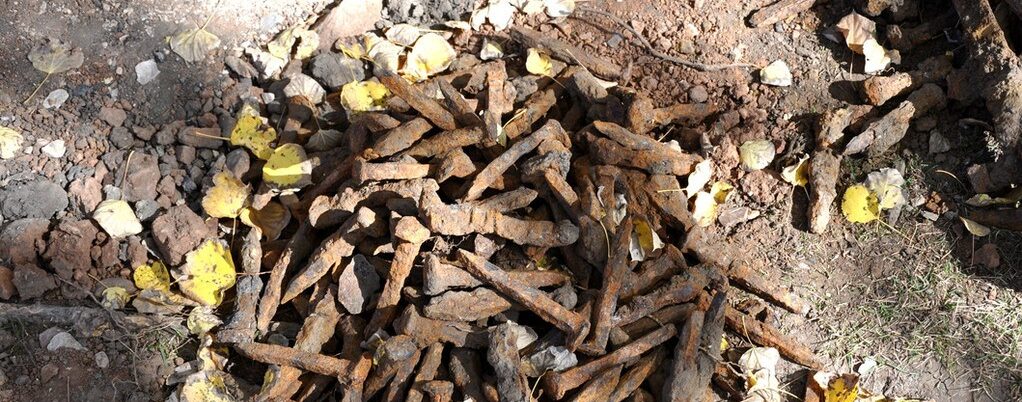Chris Merritt, SHPO

When you line out your summer landscaping projects for the backyard, encountering a glimpse into the industrial past isn’t likely one of the items on the checklist. Every year, dozens of homeowners, businesses, and agencies encounter clear evidence of those peoples who lived or worked on that same parcel in the past. With over 13,000 years of human experience in what is now Utah, the chances of finding something in your backyard, is never zero!

In October 2015, the State Historic Preservation Office received a call from the Park City Municipal Government in regards to a discovery a few miles north of downtown, and east of the famous McPolin Barn. A homeowner, while excavating for a new backyard patio and fire pit encountered a dense layer of 100+ year-old artifacts just a few feet from the back door of their home. This subdivision, built in the late 1980s through early 2000s, rested upon an industrial landscape of train tracks and rock quarries, long-since forgotten and obscured by development.
Before the Park City area was a place of life and recreation for the rich and famous, it was an industrial node of not just silver mining but also quarry stone. After arrival of the Utah Central Railroad to Park City, small spur lines were built to connect new mines, or in this case, quarries to the main line and markets elsewhere. Incorporated in 1891, the Metropolitan Stone Company (with President Simon Bamberger) established a 1600 acre quarry operation for a light brown and tan sandstone used in streetscape and landscaping (Salt Lake Herald, August 23, 1891). A spur from the railroad to the quarries was finished in 1892, and for the next fifty years hundreds of thousands of tons of product was used around the West including Works Progress Administration using the stone for walls and sidewalks at the University of Utah, and even being shipped as far as the University of California Berkeley (Park Record, “Mining Matters”, August 8, 1940). After World War 2 however the quarry business seemed to have slipped, and with the growth of the ski industry the former quarry slowly transitioned into homes by the 1980s.

It is this industrial legacy that was encountered by the homeowner! In the small hole, hundreds of iron railroad spikes were found, along with other railroad ephemera such as fishplates. More interesting though was the diversity of other goods including cartridge cases, liquor and medicinal bottles, animal bones, shoes, ceramics, amongst others. In total, well over 400 artifacts were encountered and documented by the SHPO staff in their visit, and the soil clearly was blackened and oily from years of coal dust. Bottles were the best date markers and all dated to between 1880s and 1910s, suggesting that this dump was adjacent to the quarry railroad spur, but close to a domestic occupation that mingled with the more industrial pieces.



As this was private lands, the artifacts are the property of the landowner, but in this case, the Park City Museum was gifted several of these items for preservation. And after the documentation was completed, the homeowner happily continued the recreational improvement to their backyard and who would have ever known the history they were going to encounter as they built their lives in Park City.

